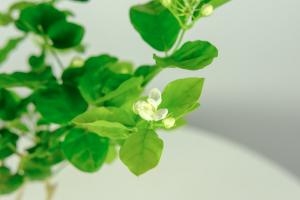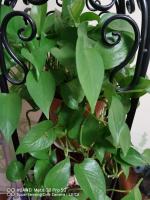When Does My Ponytail Plant Need a Bigger Pot?
Ponytail plants, also known as Beaucarnea recurvata, are popular houseplants known for their long and curly leaves that resemble a ponytail. They are low maintenance, making them perfect for those who are new to gardening or have a busy lifestyle. However, like any other plant, they will eventually outgrow their pot and will need to be repotted into a larger one. In this article, we will explain when your ponytail plant needs a bigger pot.
Signs Your Ponytail Plant Needs a Bigger Pot
The first sign that your ponytail plant needs a bigger pot is when you notice roots growing out of the drainage holes at the bottom of the pot. This means that the pot is too small to accommodate the growing roots of the plant. You may also notice that the plant is becoming top-heavy and leaning to one side or that the roots are pushing the plant out of the soil.
Another sign that your ponytail plant needs repotting is when the soil becomes compacted and dry out quickly. As the plant grows, it will require more water and nutrients; however, the soil in the pot may not be able to hold enough moisture to sustain the plant. In this case, repotting into a larger pot with fresh soil will provide the plant with the nutrients and moisture it needs to thrive.
When to Repot Your Ponytail Plant
The best time to repot your ponytail plant is during its active growing season, which is from spring to summer. During this time, the plant is actively growing and will recover quickly from the stress of repotting. Avoid repotting during the winter months when the plant is dormant as this can shock the plant and lead to wilting, yellowing, or even death.
It's also important to avoid repotting a newly purchased or recently repotted ponytail plant for at least six months to a year. This will give the plant time to acclimate to its new environment and establish its roots before repotting it again.
How to Repot Your Ponytail Plant
Before repotting your ponytail plant, ensure that you have a new pot that is at least one size larger than its current pot. Fill the new pot with fresh potting soil, leaving enough space to accommodate the plant's roots.
Start by watering the plant a few days before repotting to make it easier to remove it from its current pot. Then, gently remove the plant from its pot, taking care not to damage the roots. If the roots are tangled or compacted, gently loosen them with your fingers or a gardening tool.
Next, position the plant in the new pot, making sure to bury the roots in the soil. Fill the pot with soil, gently pressing down to remove any air pockets. Water the plant thoroughly to settle the soil and promote root growth.
Maintaining Your Ponytail Plant After Repotting
After repotting your ponytail plant, avoid watering it for a few days to give the roots time to acclimate to their new environment. Then, resume watering as usual, taking care not to overwater the plant. Ponytail plants are sensitive to overwatering and can easily develop root rot if the soil is too wet. Water the plant only when the soil is dry to the touch.
Provide your ponytail plant with plenty of sunlight, preferably in a south-facing window or outdoors in a partially shaded area. These plants prefer bright, indirect light, but they will also tolerate low light conditions. Fertilize your plant once a month during its active growing season with a balanced, water-soluble fertilizer to provide it with the nutrients it needs to thrive.
Conclusion
Repotting your ponytail plant can seem daunting, but it's essential for its health and growth. Signs that your ponytail plant needs a bigger pot include root growth out of the drainage holes, soil that dries out quickly, and a top-heavy plant that leans to one side. Repot your plant during its active growing season, and ensure that it has acclimated to its new environment before repotting it again. With proper care, your ponytail plant will continue to thrive and bring beauty to your home or office.

 how many times do yo...
how many times do yo... how many planted tre...
how many planted tre... how many pine trees ...
how many pine trees ... how many pecan trees...
how many pecan trees... how many plants comp...
how many plants comp... how many plants can ...
how many plants can ... how many plants and ...
how many plants and ... how many pepper plan...
how many pepper plan...































